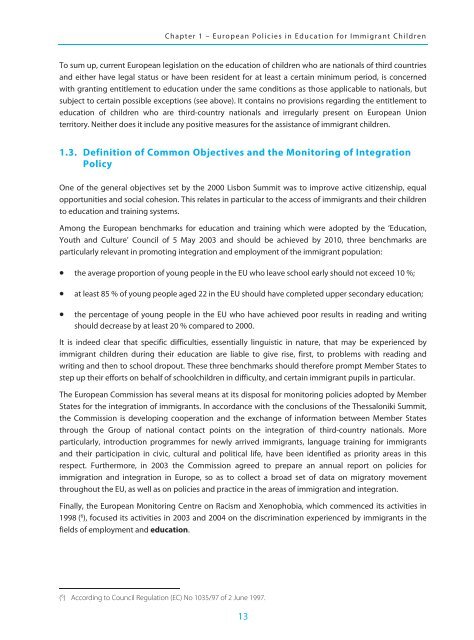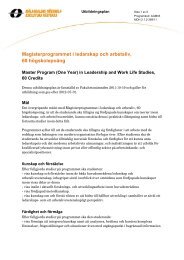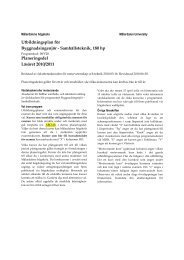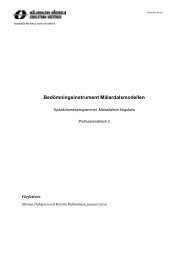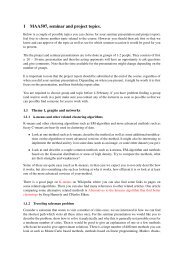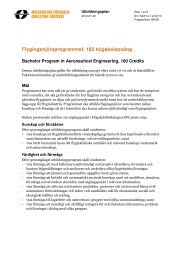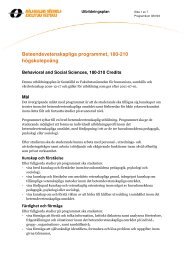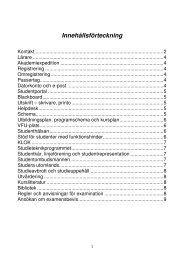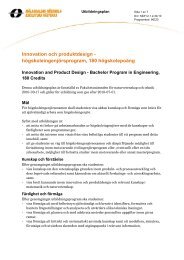Integrating Immigrant Children into Schools in Europe
Integrating Immigrant Children into Schools in Europe
Integrating Immigrant Children into Schools in Europe
Create successful ePaper yourself
Turn your PDF publications into a flip-book with our unique Google optimized e-Paper software.
Chapter 1 – <strong>Europe</strong>an Policies <strong>in</strong> Education for <strong>Immigrant</strong> <strong>Children</strong>To sum up, current <strong>Europe</strong>an legislation on the education of children who are nationals of third countriesand either have legal status or have been resident for at least a certa<strong>in</strong> m<strong>in</strong>imum period, is concernedwith grant<strong>in</strong>g entitlement to education under the same conditions as those applicable to nationals, butsubject to certa<strong>in</strong> possible exceptions (see above). It conta<strong>in</strong>s no provisions regard<strong>in</strong>g the entitlement toeducation of children who are third-country nationals and irregularly present on <strong>Europe</strong>an Unionterritory. Neither does it <strong>in</strong>clude any positive measures for the assistance of immigrant children.1.3. Def<strong>in</strong>ition of Common Objectives and the Monitor<strong>in</strong>g of IntegrationPolicyOne of the general objectives set by the 2000 Lisbon Summit was to improve active citizenship, equalopportunities and social cohesion. This relates <strong>in</strong> particular to the access of immigrants and their childrento education and tra<strong>in</strong><strong>in</strong>g systems.Among the <strong>Europe</strong>an benchmarks for education and tra<strong>in</strong><strong>in</strong>g which were adopted by the ‘Education,Youth and Culture’ Council of 5 May 2003 and should be achieved by 2010, three benchmarks areparticularly relevant <strong>in</strong> promot<strong>in</strong>g <strong>in</strong>tegration and employment of the immigrant population: the average proportion of young people <strong>in</strong> the EU who leave school early should not exceed 10 %;at least 85 % of young people aged 22 <strong>in</strong> the EU should have completed upper secondary education;the percentage of young people <strong>in</strong> the EU who have achieved poor results <strong>in</strong> read<strong>in</strong>g and writ<strong>in</strong>gshould decrease by at least 20 % compared to 2000.It is <strong>in</strong>deed clear that specific difficulties, essentially l<strong>in</strong>guistic <strong>in</strong> nature, that may be experienced byimmigrant children dur<strong>in</strong>g their education are liable to give rise, first, to problems with read<strong>in</strong>g andwrit<strong>in</strong>g and then to school dropout. These three benchmarks should therefore prompt Member States tostep up their efforts on behalf of schoolchildren <strong>in</strong> difficulty, and certa<strong>in</strong> immigrant pupils <strong>in</strong> particular.The <strong>Europe</strong>an Commission has several means at its disposal for monitor<strong>in</strong>g policies adopted by MemberStates for the <strong>in</strong>tegration of immigrants. In accordance with the conclusions of the Thessaloniki Summit,the Commission is develop<strong>in</strong>g cooperation and the exchange of <strong>in</strong>formation between Member Statesthrough the Group of national contact po<strong>in</strong>ts on the <strong>in</strong>tegration of third-country nationals. Moreparticularly, <strong>in</strong>troduction programmes for newly arrived immigrants, language tra<strong>in</strong><strong>in</strong>g for immigrantsand their participation <strong>in</strong> civic, cultural and political life, have been identified as priority areas <strong>in</strong> thisrespect. Furthermore, <strong>in</strong> 2003 the Commission agreed to prepare an annual report on policies forimmigration and <strong>in</strong>tegration <strong>in</strong> <strong>Europe</strong>, so as to collect a broad set of data on migratory movementthroughout the EU, as well as on policies and practice <strong>in</strong> the areas of immigration and <strong>in</strong>tegration.F<strong>in</strong>ally, the <strong>Europe</strong>an Monitor<strong>in</strong>g Centre on Racism and Xenophobia, which commenced its activities <strong>in</strong>1998 ( 6 ), focused its activities <strong>in</strong> 2003 and 2004 on the discrim<strong>in</strong>ation experienced by immigrants <strong>in</strong> thefields of employment and education.( 6 ) Accord<strong>in</strong>g to Council Regulation (EC) No 1035/97 of 2 June 1997.13


